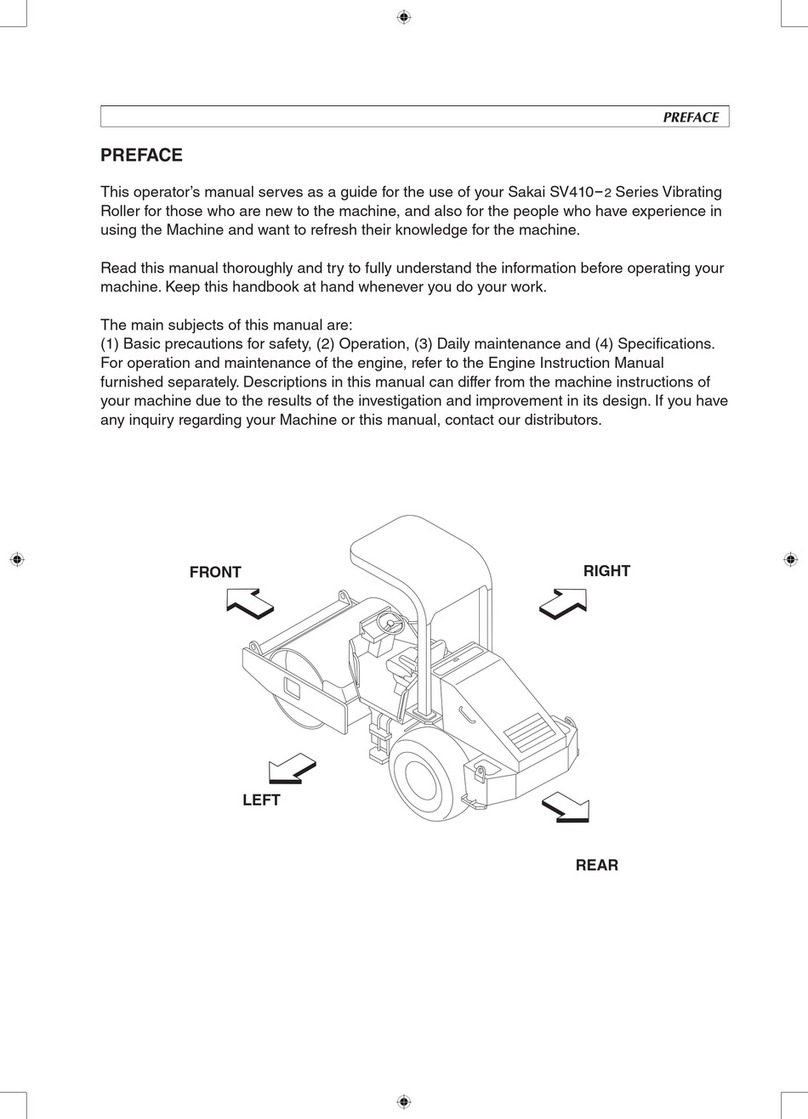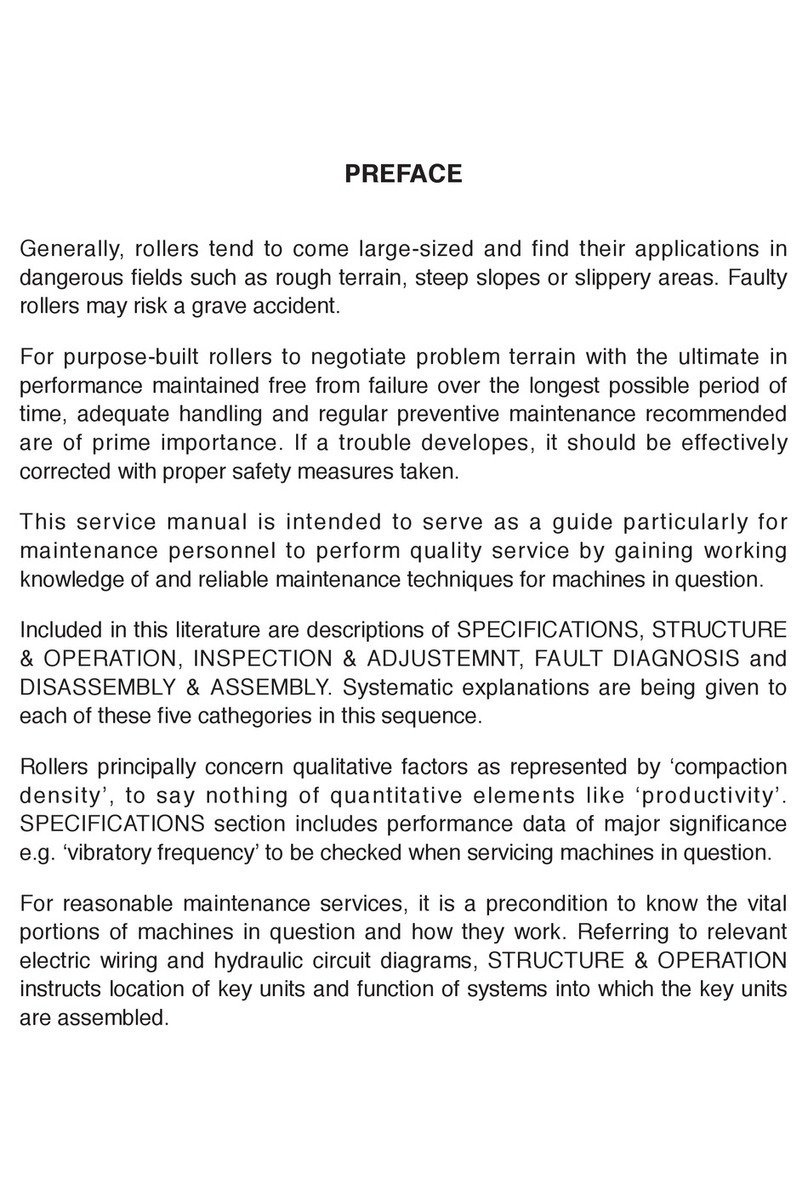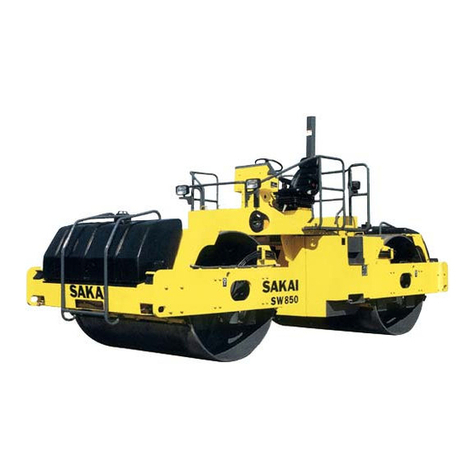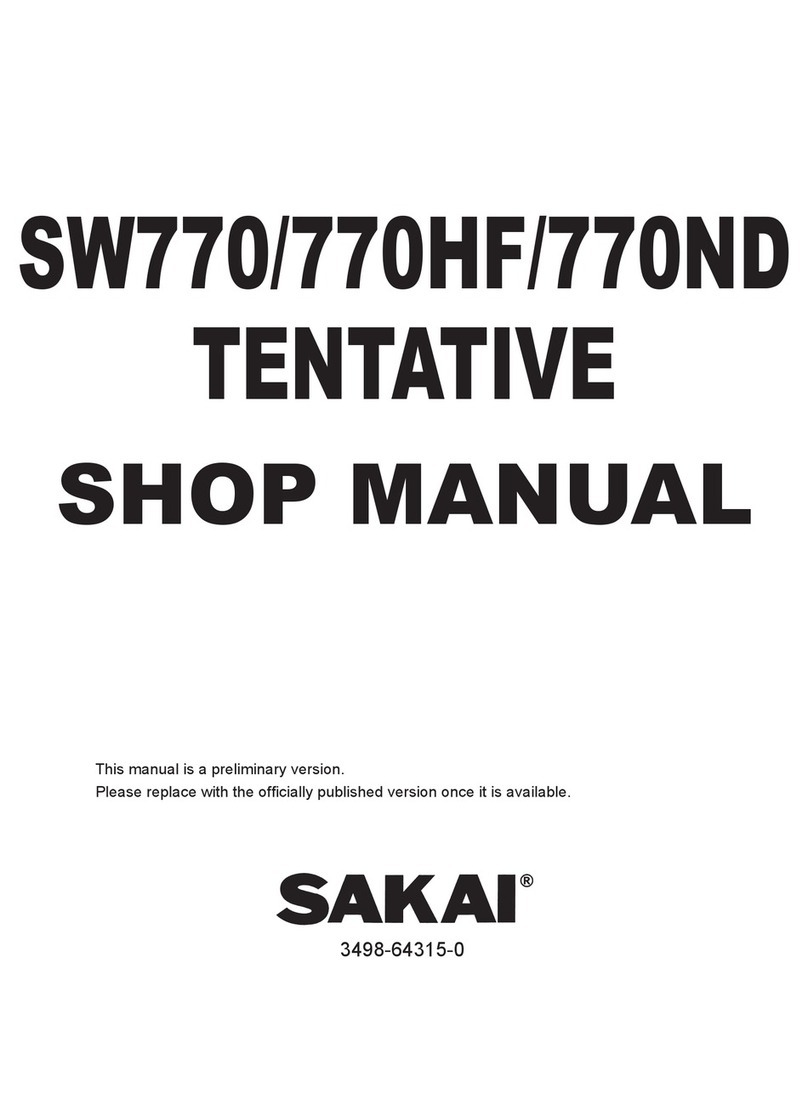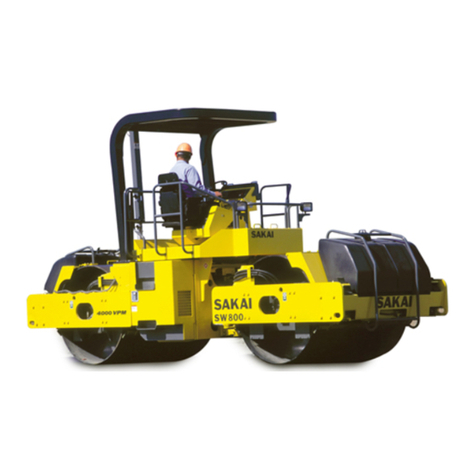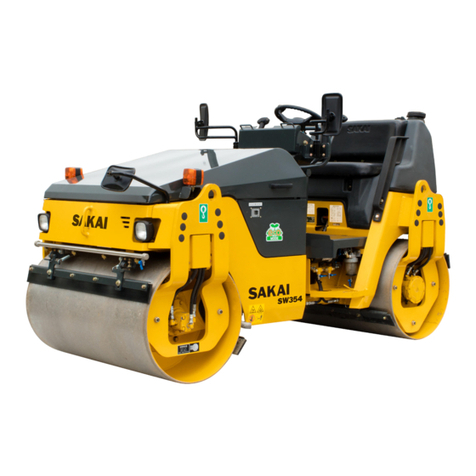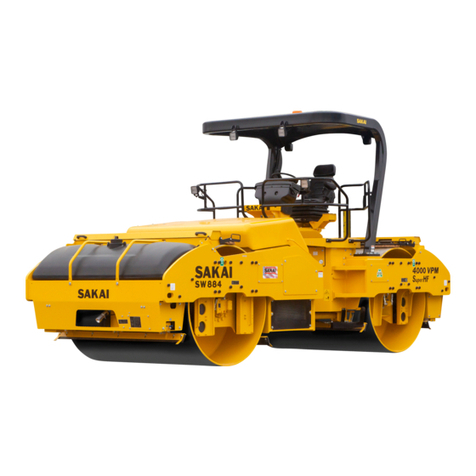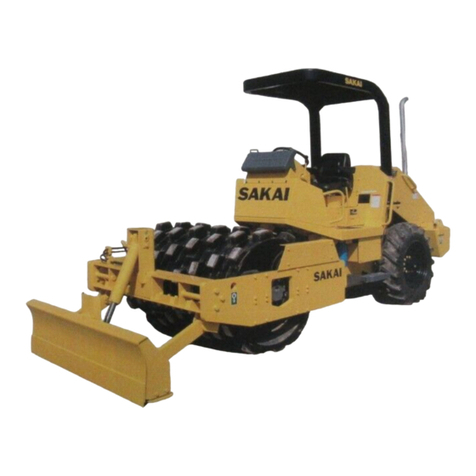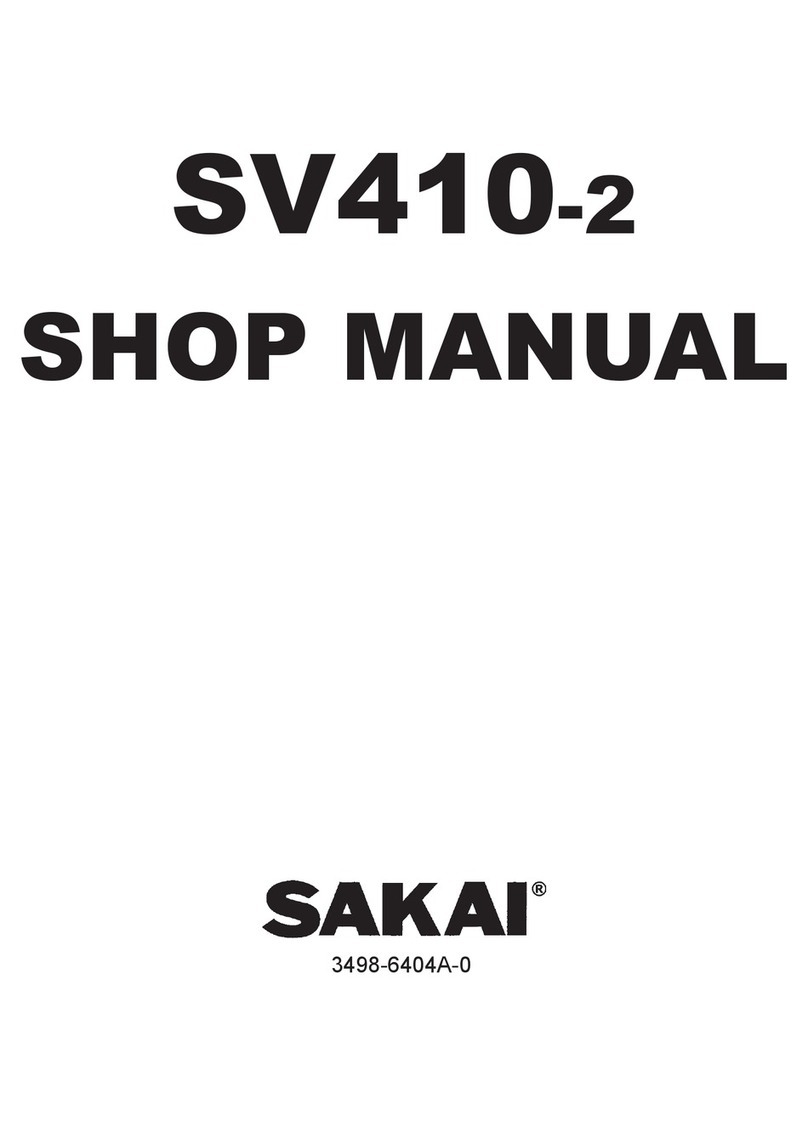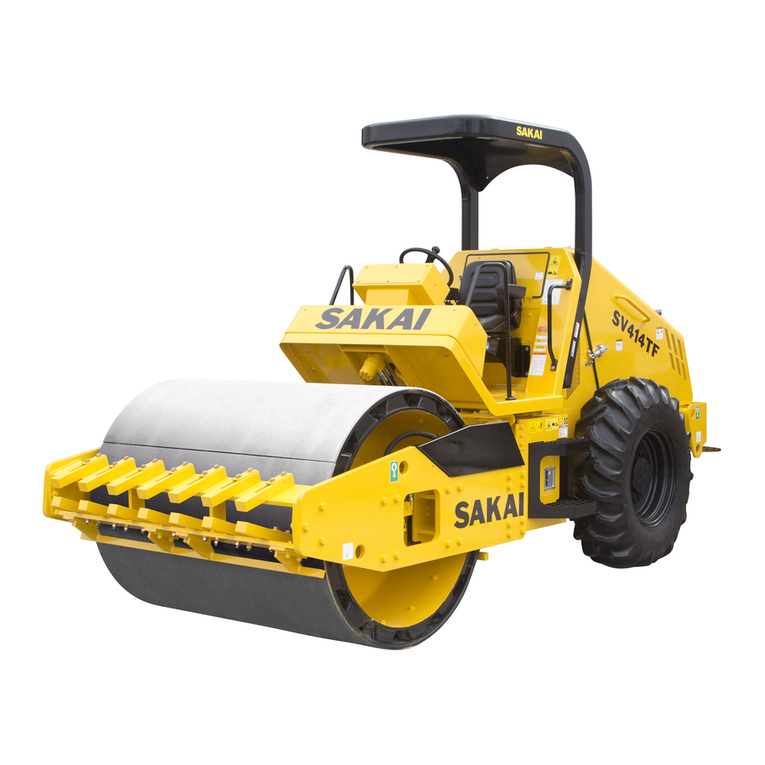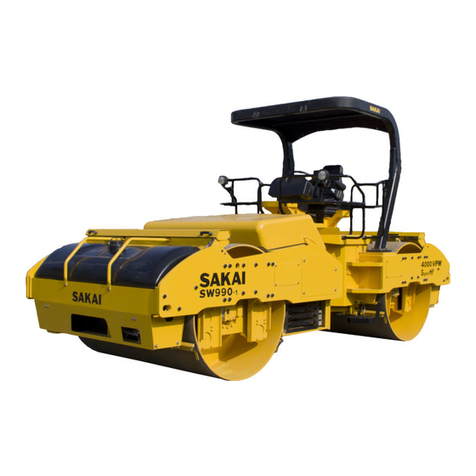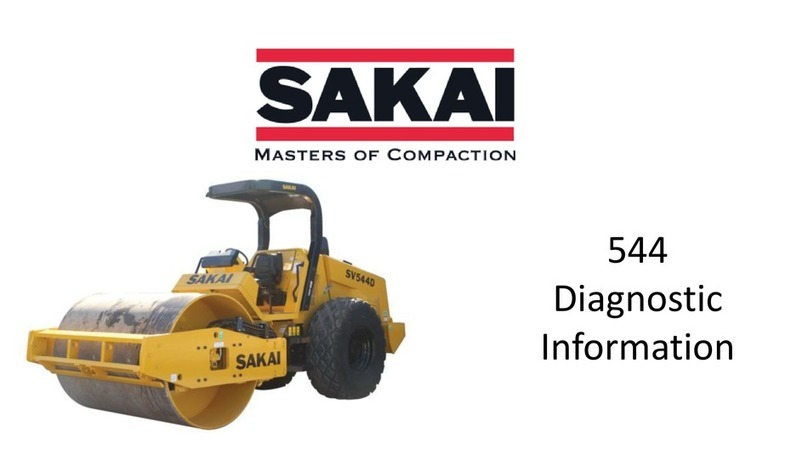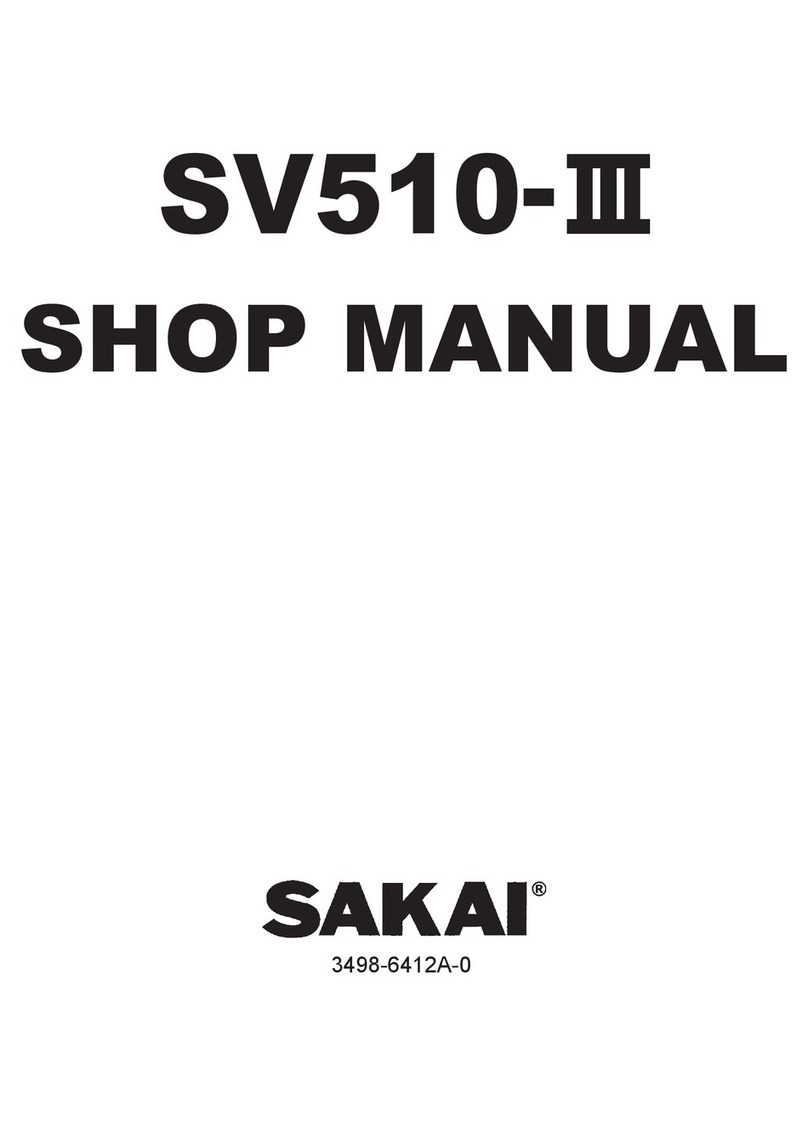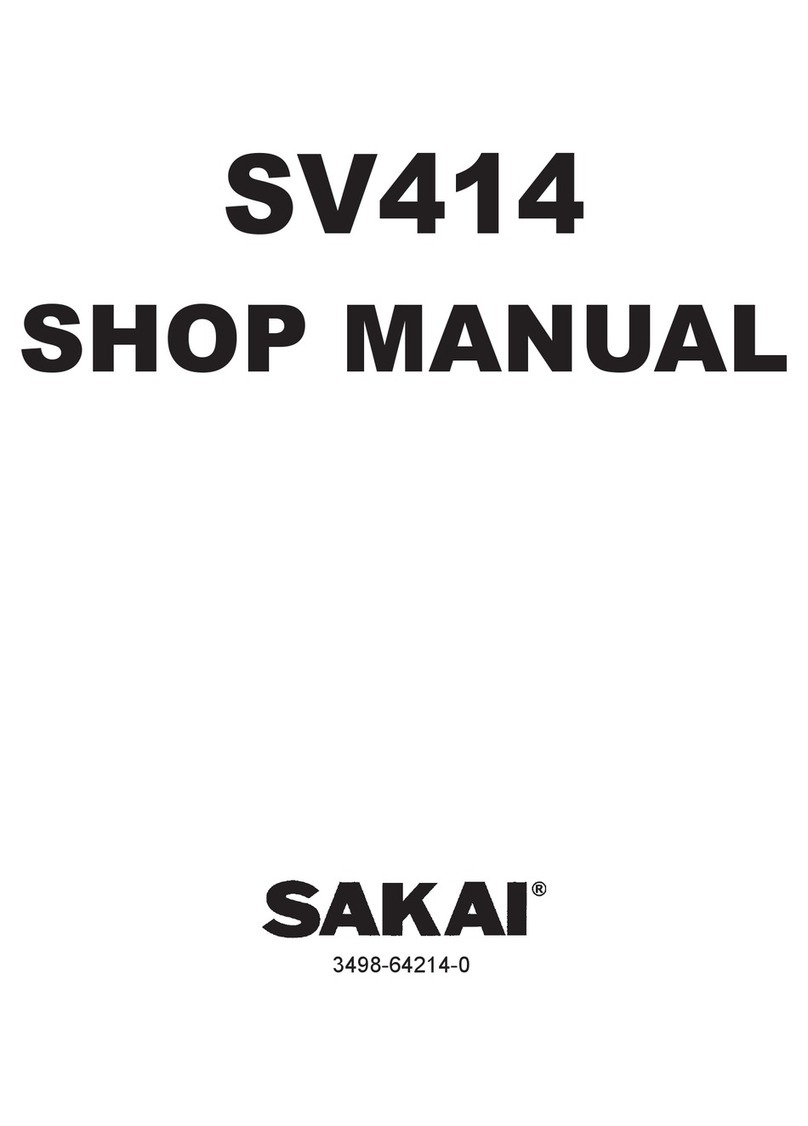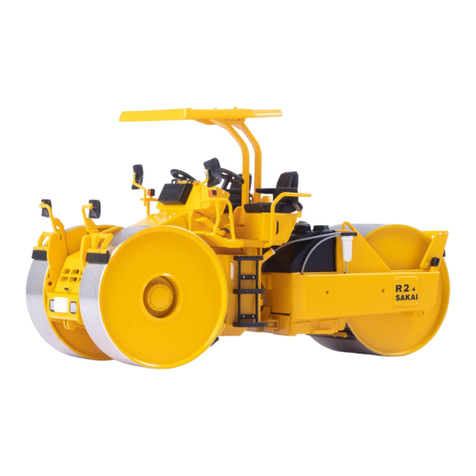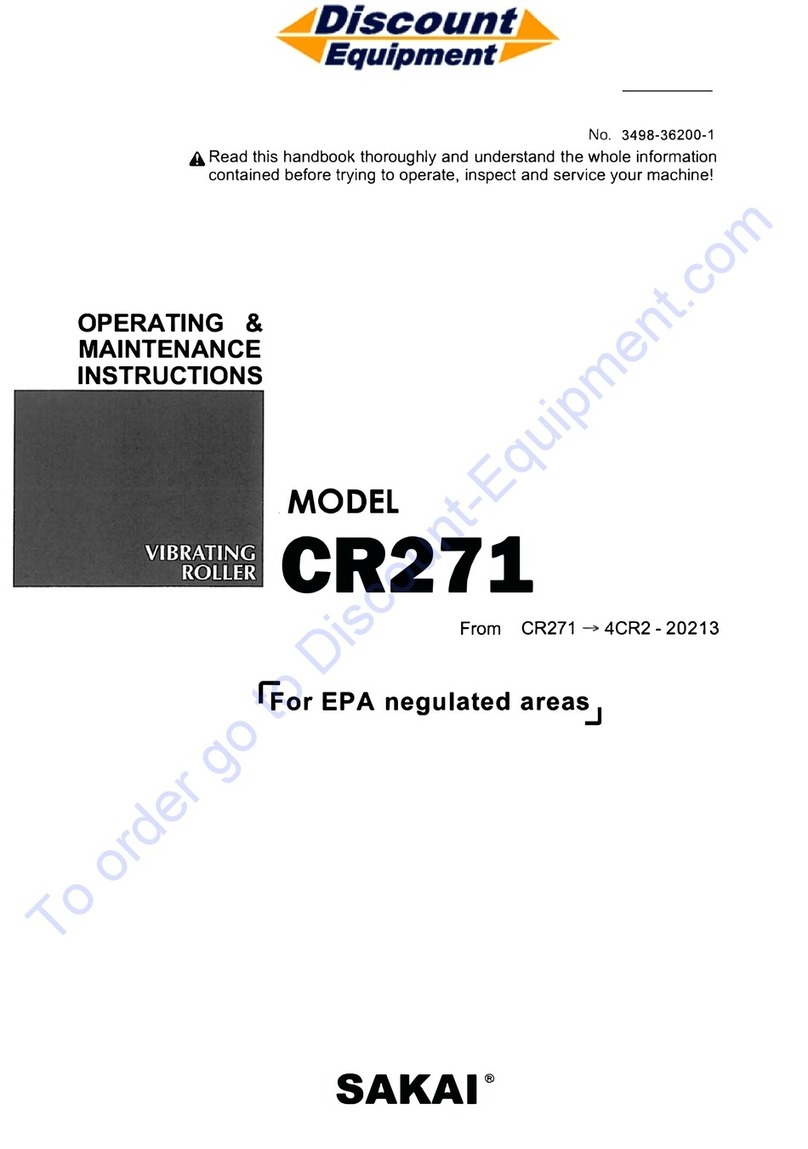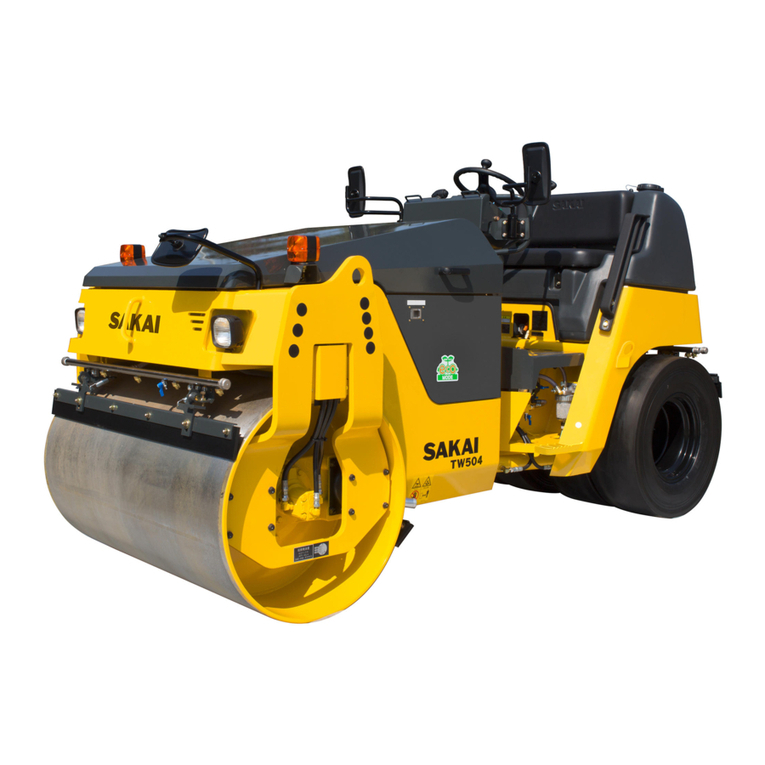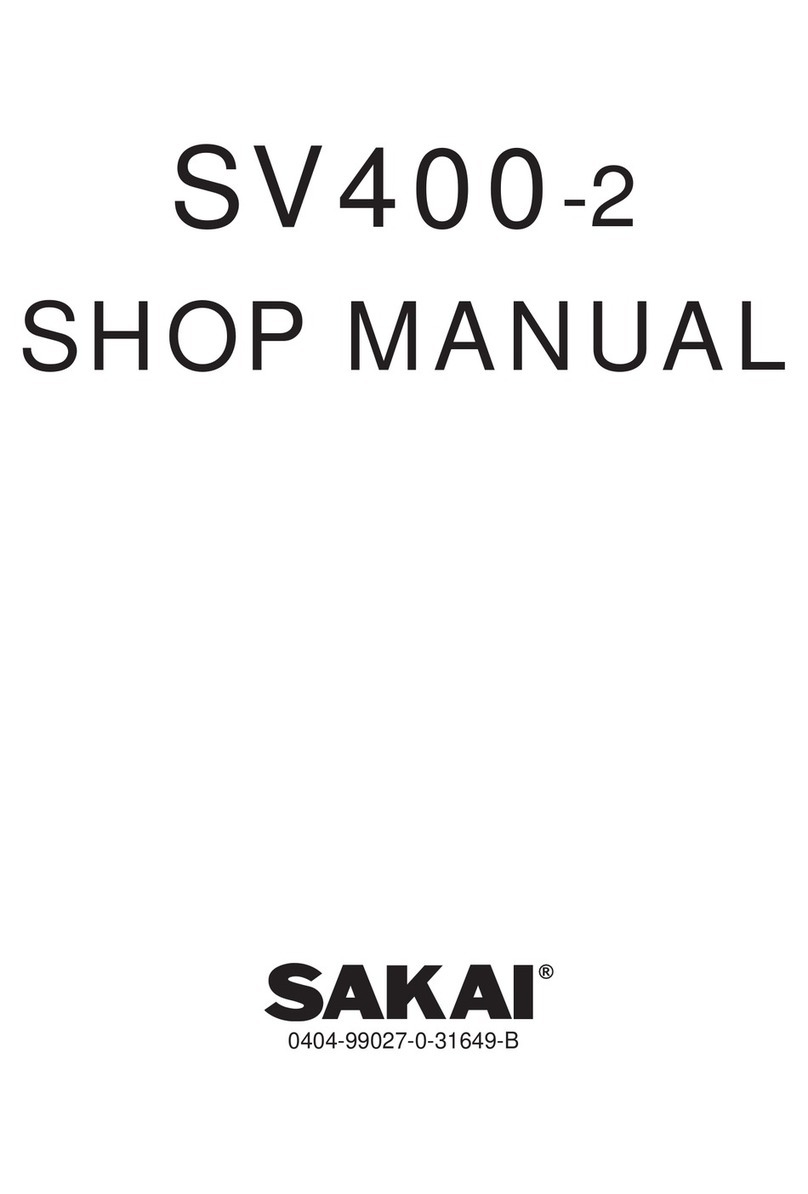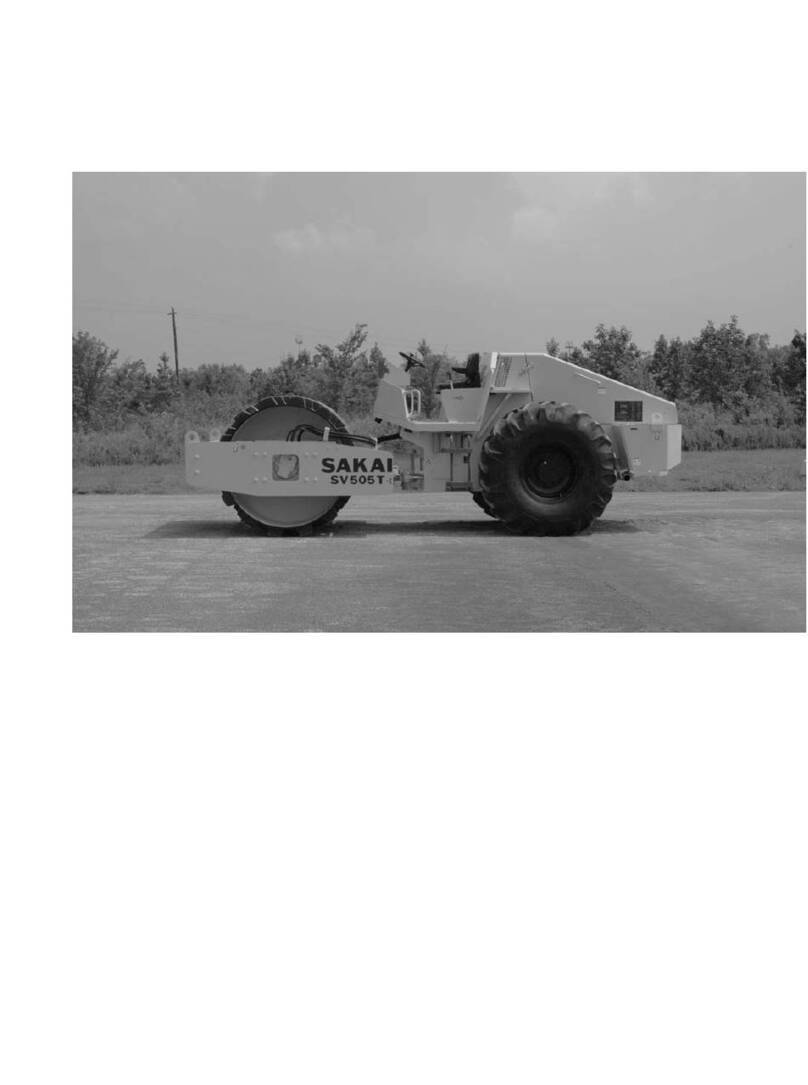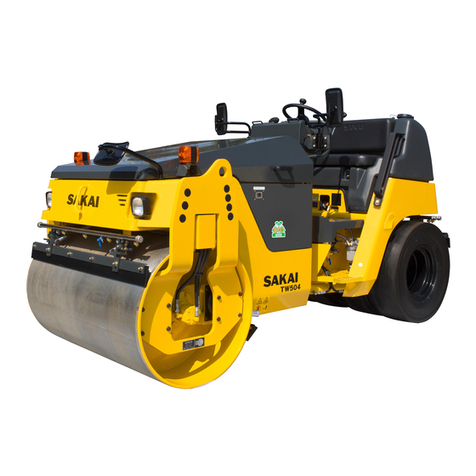
CONTENTS
2.5 Precautions for Work ............................................................................... 51
2 5.1 Compaction operation.......................................................................51
2.5.2 When going downhill.........................................................................51
2.5.3 On a slope.........................................................................................51
2.6 Applicable Jobs........................................................................................ 52
2.7 After Operation ........................................................................................ 53
2.8 Loading and Unloading............................................................................ 53
2.8.1 Use of a trailer equipped with a winch .............................................. 54
2.8.2 Self-propelling ................................................................................... 54
2.9 After Loading the Machine....................................................................... 55
2.10 Transportation.......................................................................................... 55
2.11 Operation in Cold Weather ...................................................................... 55
2.11.1 Fuel oil and grease............................................................................ 55
2.11.2 Coolant.............................................................................................. 56
2.11.3 Battery............................................................................................... 57
2.12 When the Cold Season is Over ............................................................... 58
2.13 For a Long Storage Period ...................................................................... 58
2.14 During the Storage Period ....................................................................... 59
2.15 When the Battery has Discharged ...........................................................59
2.15.1 Connection and disconnection of booster cables.............................. 60
3 PERIODIC MAINTENANCE.............................................................................. 62
3.1 Precautions.............................................................................................. 62
3.1.1 Lifting the machine by hoist............................................................... 65
3.2 Walk-around Checking ............................................................................ 66
3.2.1 Tire inflation pressure check ............................................................. 67
3.2.2 Checking for external injury to a tire.................................................. 67
3.3 Periodic Maintenance Points ................................................................... 68
3.4 Maintenance Procedure........................................................................... 70
(1) Every 10 service hours or daily......................................................... 70
(2) Every 50 service hours......................................................................73
(3) Every 250 service hours....................................................................75
(4) Every 500 service hours....................................................................78
(5) Every 1000 service hours..................................................................81
(6) As required........................................................................................ 83
3.5 Consumable Parts ................................................................................... 88
3.6 Fluid and Lubricant Capacities ................................................................ 90
3.7 Electric Wiring Diagram ........................................................................... 92
4 SPECIFICATIONS ............................................................................................ 95
CONTENTS
CONTENTS
PREFACE
MACHINE AND ENGINE IDENTIFICATION NUMBERS ...................................... 1
SAFETY NOTICES................................................................................................ 2
1 BASIC SAFETY PRECAUTIONS...................................................................... 4
1.1 General Precautions................................................................................ 4
1.2 Preparation for Safe Operation................................................................ 8
1.3 Before Starting the Engine....................................................................... 9
1.4 After Starting the Engine.......................................................................... 11
1.5 During Operation ..................................................................................... 12
1.6 Loading and Unloading............................................................................ 16
1.7 Transportation.......................................................................................... 16
1.8 Handling the Battery ................................................................................ 17
1.9 Towing ..................................................................................................... 18
1.10 Before Servicing ...................................................................................... 19
1.11 During Servicing ...................................................................................... 21
1.12 Safety Decals........................................................................................... 24
2 OPERATION ..................................................................................................... 26
2.1 Instruments and Controls......................................................................... 26
2.1.1 Operator’s station.............................................................................. 26
2.1.2 Gauges, indicator lamps and warning lamps .................................... 27
2.1.3 Switches............................................................................................ 31
2.1.4 Operating levers / pedals .................................................................. 35
2.1.5 Unloader valve .................................................................................. 36
2.1.6 Fuse box ........................................................................................... 37
2.2 Handling and Adjustments....................................................................... 38
2.2.1 Seat adjustment ................................................................................ 38
2.2.2 Scraper adjustment and replacement ............................................... 39
2.2.3 Disengaging the brake when towing ................................................. 40
2.2.4 Engine troubleshooting ..................................................................... 41
2.3 Operation ................................................................................................. 42
2.3.1 Before-starting inspection ................................................................. 42
2.3.2 Starting the engine............................................................................ 43
2.3.3 After starting the engine.................................................................... 44
2.3.4 Traveling ........................................................................................... 45
2.3.5 Stopping / Parking............................................................................. 47
2.3.6 Stopping the engine .......................................................................... 48
2.3.7 Check after stopping the engine .......................................................48
2.4 Vibratory Operation.................................................................................. 49
